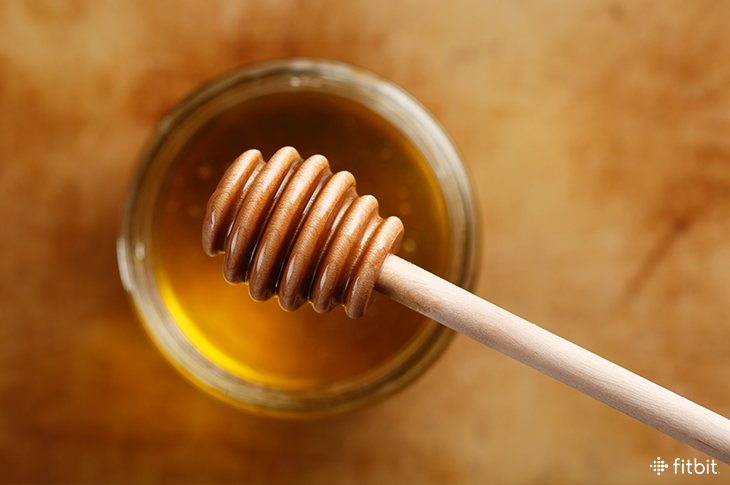
If you’re trying to reduce your sugar intake to less than 6 teaspoons a day, but still crave some sweetness, you’re probably wondering—is one type of sugar better for you than the next? You already know fruit is healthy, and high fructose corn syrup isn’t. But what about sugar, honey, maple syrup, agave nectar, brown rice syrup, coconut sugar, and stevia?
All types of sweeteners provide roughly the same amount of calories, but some are processed more than others. The biggest difference comes down to type (sucrose, glucose, or fructose), which affects the glycemic index (GI), a rating of how quickly the sugar enters your bloodstream. A high GI sweetener gushes into your bloodstream, whereas a low GI sweetener trickles in, in a more manageable way. In small amounts, there isn’t much difference.
Table Sugar (Granulated White, Raw, Brown, Turbinado)
17 calories per teaspoon | Ultra-processed | Sucrose | High GI
Classic white sugar is extracted and refined from sugarcane or sugar beets. Raw sugar is slightly less processed, and brown sugar is simply white sugar coated in molasses. Turbinado sugar is slightly less refined, with larger crystals.
The scoop: There’s no nutritional difference between any of these sugars: they all provide a quick energy hit, with virtually no vitamins or minerals. Don’t let the color fool you, either—brown sugar is no more natural than white or raw sugar.
How to use it: If you’re looking to sweeten your morning cup of coffee, go ahead and add one teaspoon (just one!).
Honey
21 calories per teaspoon | Simply processed | Glucose, fructose | Low to medium GI
It’s tempting to put halos on the bees. What’s more natural than honey? Harvesting the golden stuff is a simple process of removing the wax, spinning the liquid out of the honeycomb, and then straining it.
The scoop: Honey is a truly natural sweetener, and it can be a soothing natural remedy for coughs and sore throats. But it’s more dense than sugar, so higher in calories per teaspoon. It contains trace amounts of protein, vitamins, minerals, and antioxidants, possibly more when raw, but amounts are so miniscule it hardly matters.
How to use it: Don’t overload your smoothies and oatmeal with honey just because it’s natural—2 tablespoons is equal to almost 9 teaspoons of sugar! Rely on a few drops instead.
Maple Syrup
17 calories per teaspoon | Simply processed | Sucrose | Low GI
Pure maple syrup is made from the sap of maple trees. Trees are tapped, and then the sap is boiled to evaporate most of the water and filtered to remove impurities.
The scoop: 100 percent pure maple syrup has more minerals than honey, especially zinc, but still only in tiny amounts—not enough to make it a health food. Beware of “maple-flavored” syrups, which are imitations and loaded with refined sugars, flavors, and preservatives. Carefully read labels to make sure you’re getting the real stuff.
How to use it: Use the dark syrups sparingly for baking or in recipes that call for the stronger maple flavor. The lighter ones can be drizzled (that’s a small serving) over whole-wheat blueberry pancakes.
Agave Nectar or Syrup
21 calories per teaspoon | Ultra-processed | Fructose | Low GI
This popular sweetener comes from a Mexican cactus plant, but it takes intense processing to produce.
The scoop: Agave nectar is highly refined with virtually no antioxidants. High in fructose, it should not be eaten in excess—too much converts to fat in your liver, putting you at risk for heart disease and diabetes. Also, for those with IBS or a sensitive gut, fructose can cause bloating, gas, and abdominal discomfort.
How to use it: Agave can be used sparingly by vegans looking for an alternative for honey. Keep in mind, though, it’s 30 to 40 percent sweeter than standard sugar, so you can use less of it to get the same level of sweetness.
Brown Rice Syrup or Rice Malt Syrup
24 calories per teaspoon | Ultra-processed | Glucose | High GI
To make a sweet syrup from rice, manufacturers use enzymes to break down the starches and produce a liquid, which is then boiled and filtered to concentrate the sugar. Rice syrup has a very high GI, even higher than white sugar.
The scoop: Because it contains no fructose, rice syrup is popular in anti-sugar diets, and is even slipped into “healthy” packaged foods because of the perception that it’s better for you than corn syrup. However, it’s about 70 percent as sweet as cane sugar, so you’ll probably end up using more. Another fact to consider is the level of arsenic in some rice, particularly brown rice, which may contaminate the syrups.
How to use it: Rice syrup can be substituted for honey and dissolves well in hot drinks. It’s an option if you have a gut sensitivity to fructose, but it’s not a great choice otherwise.
Coconut Sugar or Coconut Palm Sugar
18 calories per teaspoon | Simply processed | Sucrose | Low GI
Ultra-trendy coconut can be made into a sweetener, too. It comes from the sap of the flowers, which is boiled down to a thick syrup, and then cooled to form a solid block. Shaved off or broken into bits, it resembles brown sugar.
The scoop: It contains trace amounts of minerals, like potassium and phosphorus, but also inulin—a prebiotic which supports your gut. But when you take into account how little you eat (hopefully!), it doesn’t come close to that found in real, unprocessed food.
How to use it: Surprisingly, coconut sugar doesn’t taste like coconut—it has a pleasant caramel or toffee flavor. It can be used in small amounts to replace table sugar, if you don’t mind spending a little extra money.
Stevia
0 calories per teaspoon | Ultra-processed | No GI rating
Stevia seems like a miracle—a natural, zero-calorie sweetener extracted from the leaves of an herb, but it takes intense processing to get there. It’s 250 to 300 times sweeter than table sugar, with no impact on blood sugar levels. It’s available as a tabletop sweetener, and is being added to many products, from protein shakes and soft drinks to cakes and cookies.
The scoop: If you prefer a natural sweetener over a synthetic one, and don’t want added calories, Stevia might be for you. However, it often gets paired with a sugar alcohol (like erythritol), which can cause stomach upset for those with IBS and sensitivities. Stevia extracts also have a distinct aftertaste, similar to licorice, which some people don’t like.
How to use it: Stevia can replace sugar if you’re looking for a calorie-free option in hot drinks or smoothies. It works well for those with diabetes, as it has no effect on blood sugar levels.
All of these sweeteners, whether truly natural or not, should be used sparingly. They provide empty calories with virtually no vitamins, minerals, or antioxidants, and don’t come close to the wealth of nutrients that fresh, whole fruit provides. Pick the one sweetener that tastes best to you, and stick to a light drizzle or sprinkle.
Have you made the switch to a more “natural” sugar? How do you choose to add sweetness to your day? Join the conversation below.
This information is for educational purposes only and is not intended as a substitute for medical diagnosis or treatment. You should not use this information to diagnose or treat a health problem or condition. Always check with your doctor before changing your diet, altering your sleep habits, taking supplements, or starting a new fitness routine.

If you have questions about a Fitbit tracker, product availability, or the status of your order, contact our Support Team or search the Fitbit Community for answers.
Please note: Comments are moderated and may not appear immediately after submission.